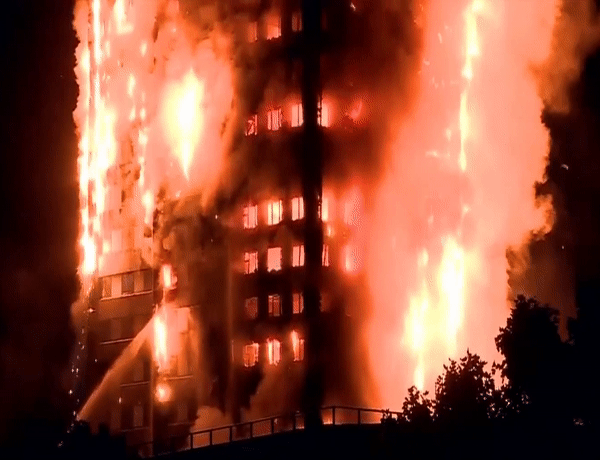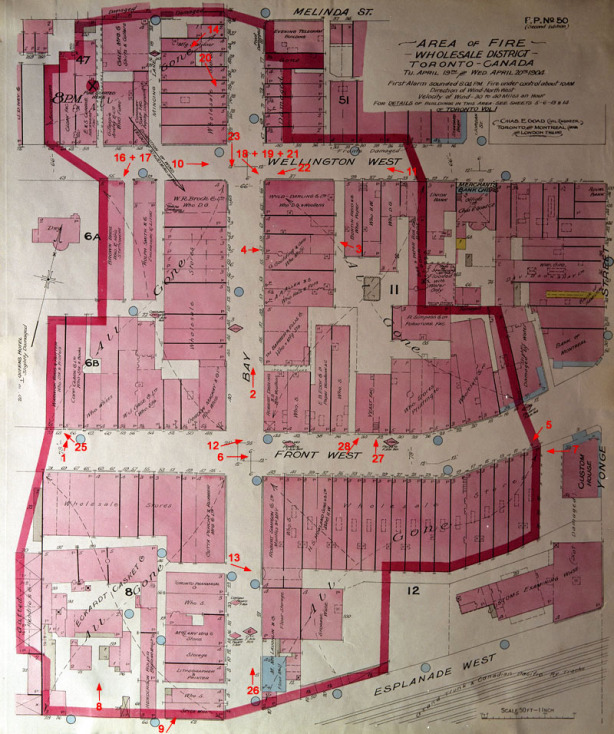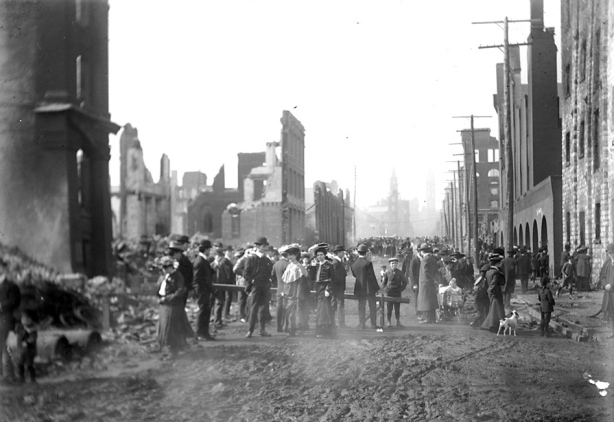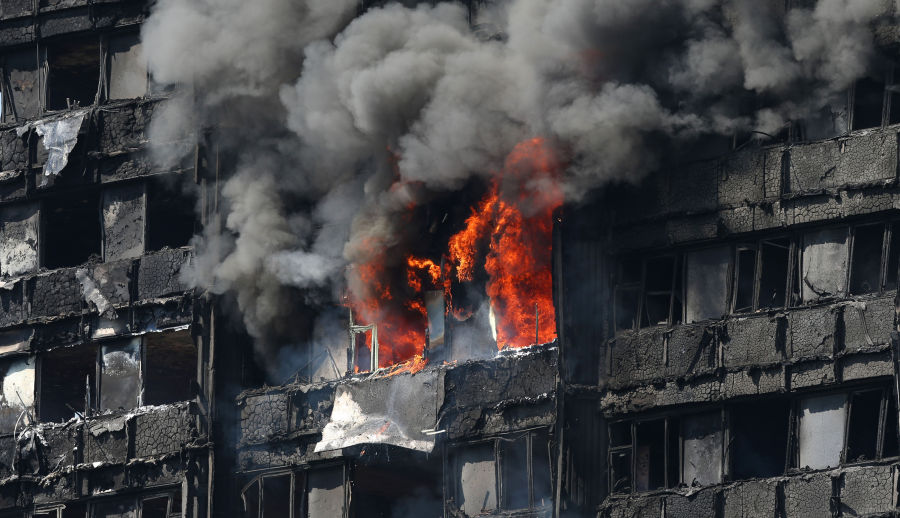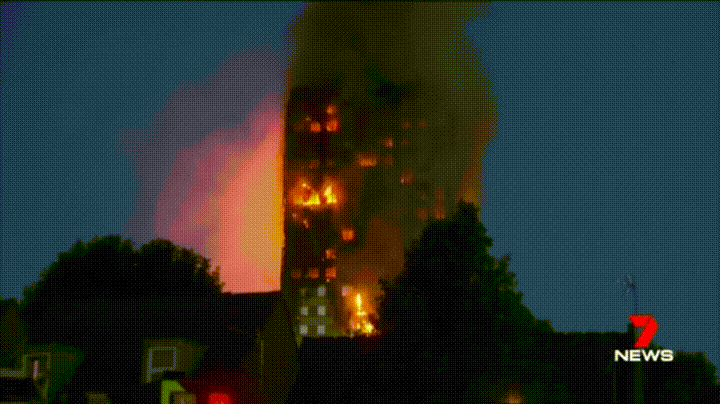Is Toronto Fire ready and capable of handling a massive fire like the London Inferno?
Secret report reveals fire response problems
Toronto firefighters have no access to critical building information, a secret consultant’s report says.
Unlike most fire services, Toronto firefighters speeding to a call have no access to critical building information like the location of water, firefighting equipment or hazardous materials, a secret consultant’s report says.
The Star, which exposed tardy response time to some blazes last year, obtained the $150,000 report under municipal freedom of information legislation. Key portions are blacked out – 53 of 157 pages and numerous other pages are censored… What kind of Free of Information is this?
Here’s what the Star has learned from uncensored areas of the report.
- Toronto Fire is taking too long to answer calls, process the information and dispatch firefighters. Details on how slow they are have been blacked out in the report.
- Unlike most fire services, Toronto firefighters enroute to a fire call have no access to critical building information like the location of water firefighting equipment or hazardous materials
- The fire service has outdated equipment for dispatching firefighters, which slows response time.
- Fire Service management lacks a “quality assurance system” to track problems within its own system.
The incident prompted local police to warn citizens to “be careful about what you post on social media so as not to victimize an innocent person.”
Toronto Fire Chief Bill Stewart originally told the Star of the existence of the consultant’s report, but then said the Toronto Fire Services Quality Assurance Review “may have privacy implications” and it could only be accessed by making a request to the city of Toronto. The Star did that, waited a month for a response, then paid $22 to the city for a 127 page report that was heavily censored.
The consultant’s review was completed in December 2009 but never made public.
The censored report is tantalizing where it should be transparent. For example, on page 10 the consultant describes his analysis of one year of fire response data from 2008. A large paragraph is removed.
What exactly is “occurring” is blacked out. On the next page, nearly half the words are covered.
Pages 98-102 – “Recommendations” – are blacked out.
One area that escaped the censor deals with the lack of information Toronto fire crews have when they head out on a call.
“Instant access to building information is a feature of many contemporary systems and the lack of this in Toronto is a concern,” the report states. The report describes the importance of dispatchers and fire fire crews having electronic access to location of the “standpipe” (pipe outside a building that acts as a hydrant); location of hazardous materials; backup firefighting equipment; gas shut off points; location of the firefighter’s elevator; and building plans.
The City of Toronto, in censoring the report, applied several exemptions. While the people of Toronto cannot read specific problems with their own fire service, the report quotes openly from other reports – one by a consultant and the other by a state agency – on tardy dispatch systems in Vermont and Washington, D.C.
This may be an archived story, it shows there is NO FREEDOM OF INFORMATION after all.
The star in the old days used to practice classy journalism like this article. Today? We rather reserve our comment … See their news to judge for yourself.
Here is another archived story of interest …
Toronto Inferno
The Great Fire Of Toronto In 1904
A little over 100 years ago on a bitterly cold and windy spring night, a fire swept through the downtown destroying a huge swath of the city’s commercial heart.
On the 19th of April, 1904, a large section of downtown Toronto burned for nine hours.
Street map of downtown Toronto showing the buildings that were affected by the fire of 1904.
Map showing the area of Toronto affected by the fire of 1904. Bay Street from the Esplanade to Miranda Street (just south of King Street) was the hardest hit. At the time, this was called the Wholesale District of the city.
Aftermath, Bay street, April 1904.
Historical photo of Bay street after the 1904 fire in Toronto. There are people on the street. The street is all mud. There are many burned out buildings on both sides of the streets. Brick facing of two to four storey buildings is all that remains.
As a result of the fire, 5000 people were left without a job. In 1904, the population of Toronto was about 200,000 so the loss of employment on this scale had a profound impact on the city.
The original imaged are kept at the City of Toronto Archives, located on Spadina Road., just north of Dupont Street.
More images of the London Inferno
Grenfell Tower Engulfed By Fire
Yet another Toronto Fire story …
Why Ontario’s paramedics don’t want firefighters performing emergency care
The Ontario firefighters association wants the province to allow firefighters to perform some of the duties of paramedics.
While that sounds perfectly logical to some, many municipalities and paramedics are hopping mad. They call the proposal a brazen attempt to protect incredibly costly firefighter salaries at a time of dwindling fires.
“It doesn’t seem like a good use of taxpayer dollars.” says Corey Nageleisen, member of the CUPE Ambulance Committee of Ontario.
Nageleisen warns that given the long shifts firefighters work—24 hours, in contrast to the 12-hour shift Nageleisen had worked the day before speaking with TVO.org – public safety could actually be put at risk by overly-tired firefighters attempting to administer medical care.
“When crime goes up we pay more for police. When fire risk goes up we spend more on fire service. EMS calls are going up, so we pay more for firefighters? It doesn’t make sense.”
Paramedics argue they are better trained to handle medical emergencies than other first responders, and that it is much more cost effective to send a two-person ambulance than a four-person fire truck to help someone in distress.
Historically, paramedics have not received the same level of funding as fire and police services. For Nageleisen, that makes any proposal to let firefighters do the work of paramedics tantamount to an insult.
At this year’s annual meeting of the Association of Municipalities of Ontario, outgoing president Gary McNamara warned that police and fire service payrolls are already straining municipal budgets, and adding paramedic services to the fire payroll would make matters worse.
“Police and firefighters are the most highly-paid employees we have, and they should be. But we can’t pay them increases at the expense of other services that keep our communities safe and healthy,” McNamara said.
Of particular concern is that, if the province allows the hypothetical use of firefighters as paramedics, municipalities could be forced into it by the binding arbitration that governs police and fire labour negotiations.
Read more at TVO.org
__________________
Related: –
